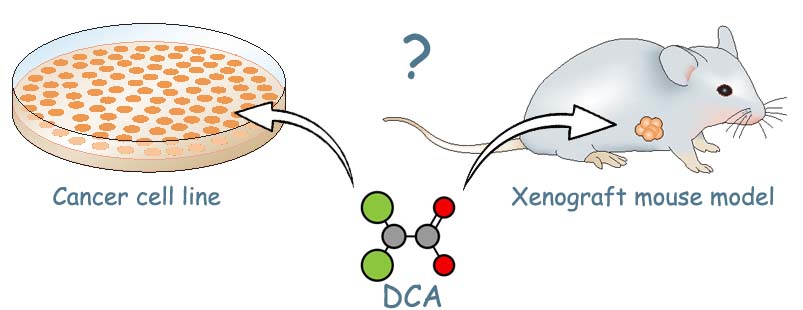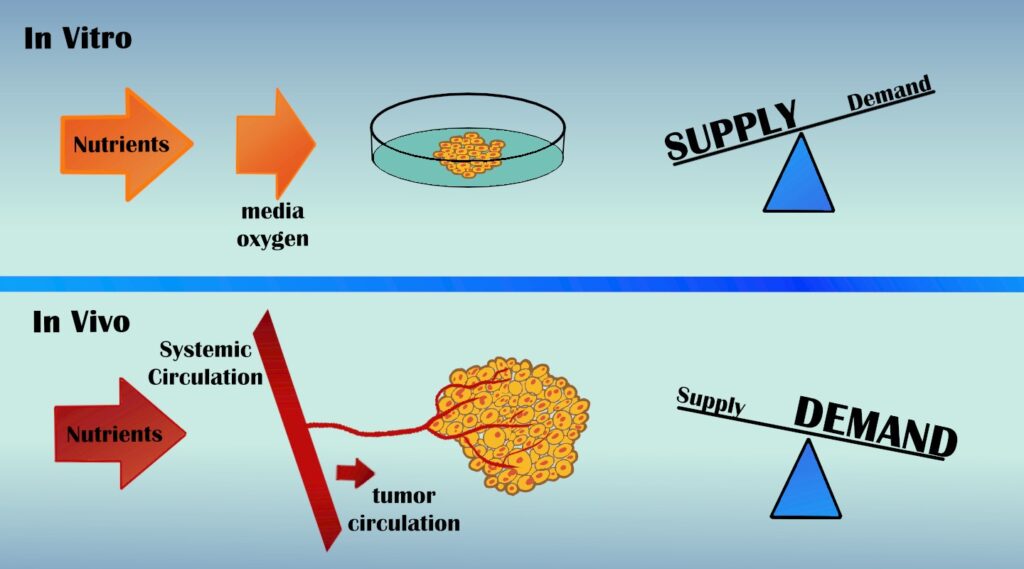Just recently, dichloroacetate has drawn attention as a novel, yet a simple and cheap therapy option that could change the way we approach a lot of oncological illnesses. Considering that all tumors need nutrients to grow, it seems reasonable that cutting of the food supply for cancer can be one of the ways we could finally cure it. However, it is not that simple.
One cannot simply starve and eliminate cancer, because the tumor starts getting its nutrients from other sources than the food that we consume. Think about it – if we avoid eating for a day or two, we do not fall straight into hypoglycemic coma. A human being can live for 1-2 months without food as long as there is an adequate water intake. This means that our body has mechanisms, which keep the glucose stable in our blood.
Therefore, avoiding food overall is not an option. To treat cancer successfully, we need tools that keep it from feeding and growing. Could we use something to inhibit the fuel for tumors? It looks like Sodium dichloroacetate could be one of the molecules that would let us achieve this, because it selectively deprives cancer cells from glucose. In 2007, researchers from North America discovered that this old drug could be repurposed to target glycolytic tumors. On top of that, it was already known that it produces limited adverse effects on healthy organs. Since then a lot of studies have been directed towards this relatively simple substance.

A recent research paper aimed to explain the main differences on how such anticancer drugs perform in laboratory cell cultures and in live tumor models. Surprisingly, the study revealed that DCA works better in live organisms such as mice than in Petri dishes with cancer cell lines. And there are a couple of reasons for that. One of the main points is the fact that anticancer medications generally affect tumor cells quite different in vitro than in vivo. Imagine, when scientists test anti-cancer therapy concepts in a cell-culture dish, the cancer cells are surrounded by 5 times more oxygen and at least 10 times more glucose molecules than a real-life tumor would be in a living organism. Just a few of these changes can totally alter the way the tumor cells respond to experimental therapy.

During the research, the scientist team noted that medications like Sodium dichloroacetate may have little effect on cell cultures compared to real tumor models in animals. The opposite can sometimes also be true. Some experimental treatments can only be useful in Petri dishes with artificial, non existing environments. For example, 2- deoxyglucose is an effective substance against cancer, but, unfortunately, it can cause severe side effects in living organisms and thus is not acceptable as a therapeutic agent.
The good news is that DCA is relatively non-toxic and seems to have a greater anticancer effect in vivo than in vitro. Which basically means that dichloroacetate has better potential to heal cancer in living beings and not in laboratory dishes. This information is eye opening for future research and could be vital for the upcoming studies to determine how well DCA works as a single treatment or in combination therapy with existing medications against tumors.

This should be closely considered and kept in mind in the future experiments while trying to evaluate the effectiveness of new healing substances.
Ultimately, it remains evident that dichloroacetate deserves more attention because of its powerful potential to fight cancer. More research could be extremely helpful in uncovering answers how to integrate Sodium dichloroacetate with chemotherapy, target therapy or immunotherapy.
How could we avoid peripheral neuropathy completely or what drugs serve in combined anticancer treatments? Hopefully, the picture becomes clearer as time goes by. Till then, it is evident that animal models will remain the best selection to determine the most promising therapeutic combination.
If you’re interested in the study, please read more below:
Anticancer drugs that target metabolism is dichloroacetate